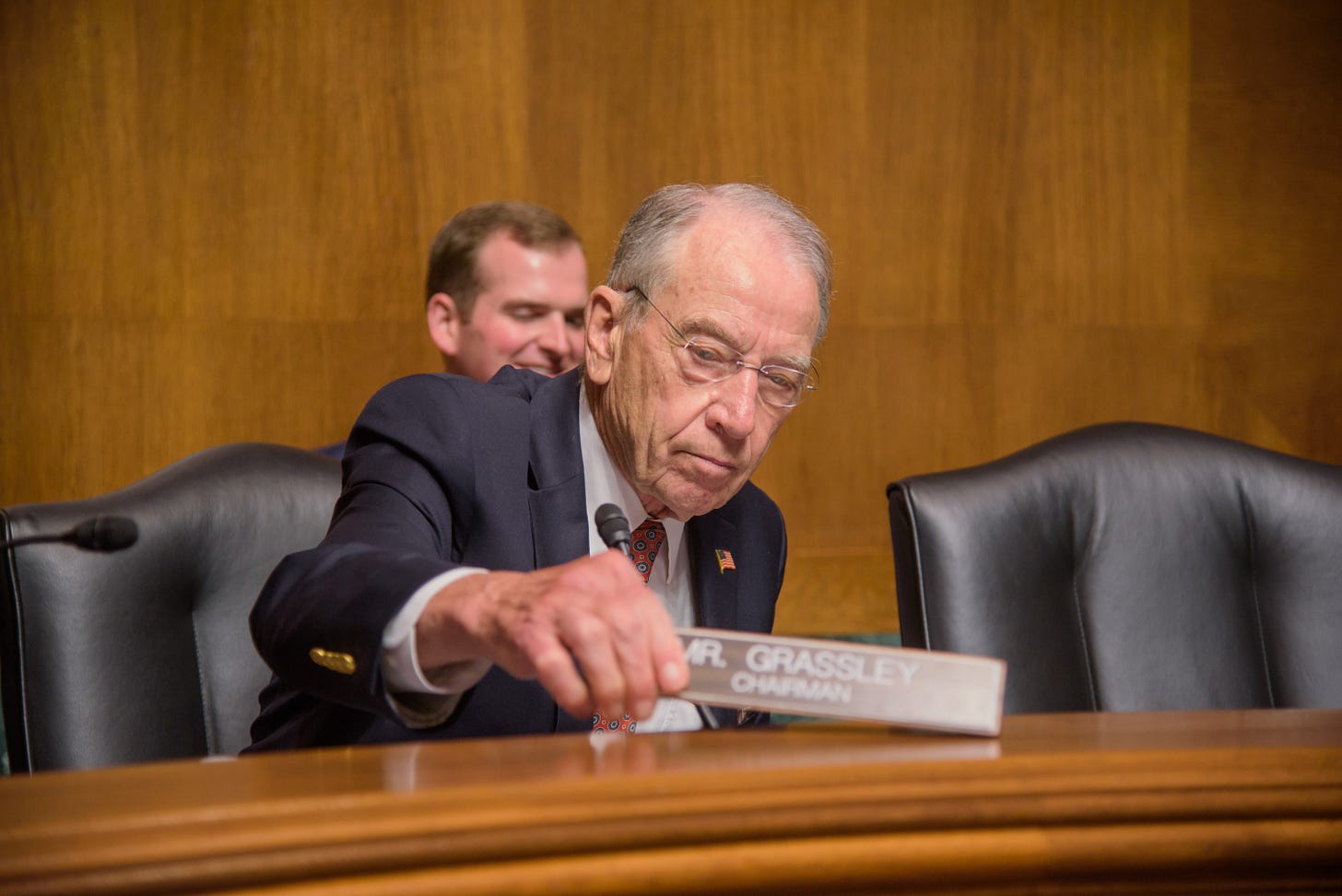This Is How The U.S. Senate Oversees Federal Courts?
The head of the Senate Judiciary Committee commends two federal judges who blamed underlings for using artificial intelligence to draft error-ridden orders that wreaked havoc.
The Senate Judiciary Committee is one reason the U.S. judiciary remains a backward, secretive institution, where corruption flourishes without accountability to the American public.
Two federal judges admitted to issuing flawed orders based on artificial intelligence. Their orders misquoted state law, referenced individuals who were not involved in the case, and attributed fictional quotes to parties, among other significant inaccuracies. These orders wrought havoc.
Meanwhile, two other federal judges fined attorneys who did exactly the same thing in separate cases - used flawed AI research in court motions.
So why did Senate Judiciary Chair, U.S. Sen. Charles E. Grassley, R-Iowa, recently commend the judges? Why is there a double standard between federal judges and the attorneys who appear before them?
Grassley requested an explanation from the judges who used AI in their court rulings, U.S. Southern District of Mississippi Judge Henry T. Wingate and U.S. District of New Jersey Judge Julien Xavier Neals. Grassley noted that the judges errors “cast doubt on the Judiciary’s deliberative process and raise legitimate concerns about the accuracy of the courts’ decisions.”
In response, Wingate, in a letter to Grassley, blamed an unnamed law clerk. He wrote that the practice in his chambers involves multi-layered standard of review, but the decision in question “was an early draft that had not gone through the standard review process. It was a draft that should have never been docketed. This was a mistake.”
Neals, in a letter to Grassley, blamed a law school student intern, whom he called a “temporary assistant,” who used AI “without authorization, without disclosure and contrary to not only chambers policy but also the relevant law school policy.” Neals, too, said the ruling “was an early draft that had not gone through the standard review process. It was a draft that should have never been docketed.” (This mistake likely ruined the law student’s promising career.)
Both judges failed to acknowledge their wrongdoing and blamed underlings.
In reality, federal judges, who are paid hundreds of thousands of dollars by taxpayers, are solely responsible for their rulings and orders, not law clerks or, especially, law students.
Here was Grassley’s weak response to Wingate and Neals: “Honesty is always the best policy. I commend Judges Wingate and Neals for acknowledging their mistakes and I’m glad to hear they’re working to make sure this doesn’t happen again.”
The judges appear to have violated the Code of Conduct For United States Judges, but that, apparently, is of no consequence.
Among other things, the Code of Conduct for United States Judges requires judges to “diligently discharge administrative responsibilities, maintain professional competence in judicial administration, and facilitate the performance of the administrative responsibilities… of court personnel.”
Not only did Wingate and Neals fail to competently manage their dockets, but their rulings were inaccurate, grossly unfair to parties, and resulted in significant delays and unnecessary expense to both the parties and the court system. They failed to monitor the clerks who work for them, and signed court orders for docketing without adequate review.
Wingate appears to have engaged in deceptive behavior. He initially blamed the errors on a clerical mistake and replaced the flawed order with a backdated, corrected version. Normally, a clerical error would refer to a filing error. However, Wingate wrote that he used the term clerical “to signify that the mistakes were due to a failure to confirm the accuracy of certain information rather than errors in core legal reasoning or the ultimate judgment on the merits.” This explanation is unpersuasive at best.
Misconduct?
One might have expected the chief circuit court judges in the judges’ respective districts to file ethics charges, but that didn’t happen because, of course, it could reflect badly on the chief circuit court judge who is responsible for overseeing the judge. It is unclear whether any litigant had the courage to file a judicial misconduct complaint, but such complaints are virtually always dismissed. There is no independent review of judicial misconduct complaints.
The Administrative Office of the U.S. Courts (AO) wrote Grassley a weasle-like letter, stating that the AO established an AI Task Force in July that issued an interim guidance which includes “general, non-technical suggestions” allowing judges to experiment with “AI tools.” The task force recommended that AI users “consider whether the use of AI should be disclosed.”
Neither Wingate nor Neals disclosed that AI was used in their initial rulings.
According to Grassley, the Senate Judiciary Committee has broad oversight over civil and criminal judicial proceedings, the federal courts, federal judges and other related matters. This is oversight?

